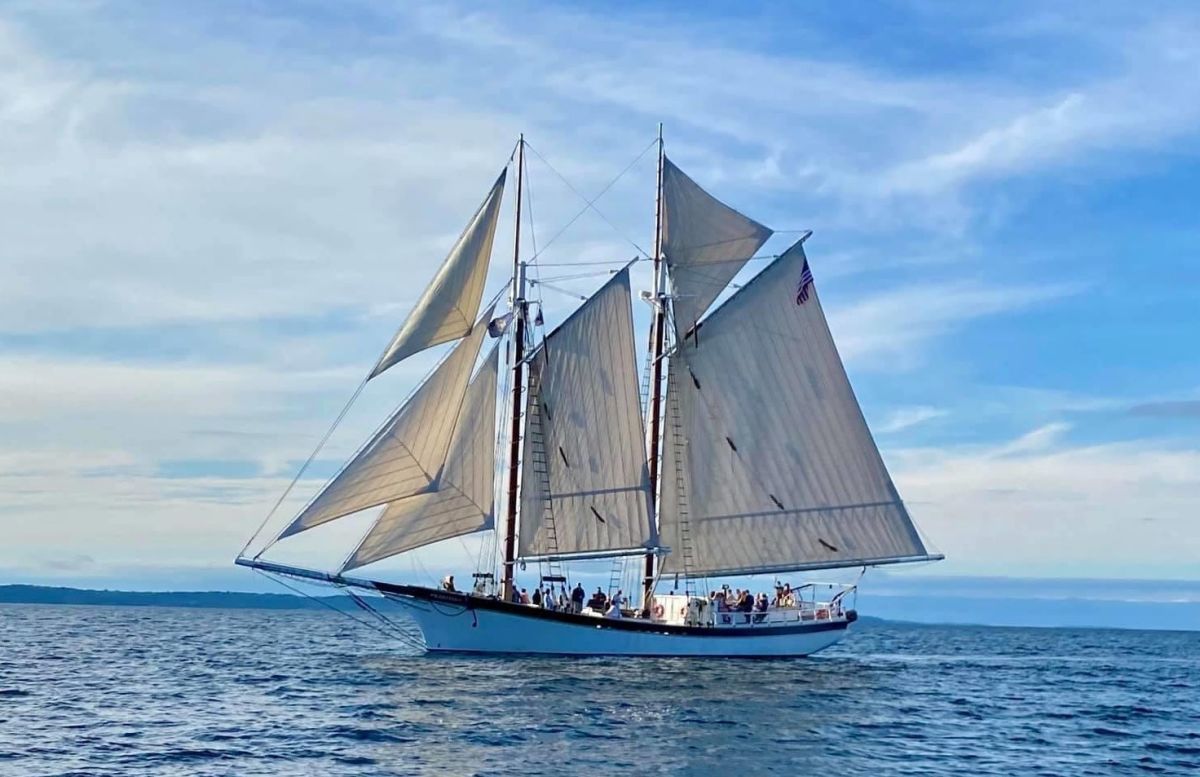Tall ships are majestic, traditional sailing vessels that evoke a sense of nostalgia for the golden age of sailing. These iconic ships, with their towering masts and expansive sails, offer a window into maritime history and continue to captivate sailors and enthusiasts worldwide. Whether used for exploration, trade, or leisure, tall ships are a symbol of craftsmanship, adventure, and the enduring spirit of the seas.
In this article, we’ll explore the world of tall ships, their history, distinctive features, and their role in modern sailing and recreation.
What is a Tall Ship?
A tall ship is a type of traditional sailing vessel known for its large size, multiple masts, and expansive sails. These ships are generally characterized by a minimum of two masts (although they can have many more), with the tallest masts rigged with square sails. Tall ships are most commonly associated with the age of sail, from the 16th to the 19th centuries, though some still sail today as part of maritime festivals, educational programs, and as part of sailing regattas.
While the term “tall ship” can be used informally to describe any large sailing vessel, it typically refers to historical ships of significant height and grandeur. These vessels were built for both functionality and aesthetics, with the ability to carry large cargo loads or transport crews across vast oceans.
History of Tall Ships
The history of tall ships dates back to the early days of ocean exploration, trade, and warfare. These ships were integral to the development of global trade routes and the expansion of European empires. During the Age of Exploration (15th–17th centuries), tall ships enabled explorers like Christopher Columbus, Ferdinand Magellan, and James Cook to sail across uncharted waters, making significant discoveries that shaped the course of history.
Tall ships were also essential during the Age of Sail (17th–19th centuries), a period when sail-powered vessels dominated global trade and military strategy. Ships such as frigates, clippers, and galleons were used to carry goods, passengers, and even as warships. The towering masts and vast sails of these ships allowed them to navigate long distances and make transoceanic voyages, facilitating international trade, cultural exchange, and warfare.
Over time, the advent of steam-powered ships and eventually motorized vessels led to the decline of traditional tall ships. However, many tall ships were preserved for their historical value, and their legacy continues to inspire new generations of sailors and maritime enthusiasts.
Distinctive Features of Tall Ships
Tall ships are distinguished by several features that make them stand out from other types of sailing vessels. These characteristics include:
1. Multiple Masts
A defining feature of tall ships is their multiple masts, typically ranging from two masts (known as a brig) to five masts (known as a five-masted schooner). Each mast is rigged with several sails, which were once powered by the wind to propel the ship forward. The number of masts varies depending on the size and purpose of the ship.
2. Square Rigging
One of the most iconic features of tall ships is their square rigging. This refers to the arrangement of sails, where large, rectangular sails are attached to horizontal spars (crossbeams) that extend from the masts. Square-rigged ships were highly effective for long-distance voyages, as they could catch the wind more efficiently and provide greater speed.
3. Tall Masts
The term “tall ship” derives from the impressive height of the ship’s masts. These towering masts are typically taller than the length of the ship itself, making the vessel stand out in the water. The tall masts are essential for supporting the expansive sails that give tall ships their distinctive appearance.
4. Complex Rigging and Sail Plan
The rigging of tall ships is a marvel of nautical engineering. To control the sails and keep the ship on course, the crew must manage a network of ropes, pulleys, and lines, called rigging. A complex sail plan with multiple sails, ropes, and blocks is used to catch the wind from various directions and angles, providing the ship with flexibility in varying weather conditions.
5. Large Cargo Holds
Historically, tall ships were designed with ample cargo holds to carry goods and supplies on long voyages. The holds were large enough to transport large quantities of merchandise like spices, sugar, silk, and textiles. Some tall ships were also designed to carry passengers or even soldiers, depending on their intended purpose.
6. Beautiful Woodwork
Many tall ships, especially those built in the 18th and 19th centuries, feature stunning woodwork. The wooden hulls, decks, and interiors were often crafted from high-quality timber, such as oak or teak. The intricate details and craftsmanship in the ship’s design were not only functional but also aesthetically pleasing.
Types of Tall Ships
There are several different types of tall ships, each with a unique design and purpose. Some of the most common types include:
1. Schooner
A schooner is a two- or more-masted ship that uses a combination of fore-and-aft sails and square sails. Schooners were popular in the 18th and 19th centuries for cargo transport, as they were fast and easy to handle.
2. Brigantine
A brigantine is a two-masted ship with a square rig on the foremast and a fore-and-aft rig on the mainmast. This combination made brigantines versatile and capable of sailing in various wind conditions.
3. Barque (or Bark)
A barque is a three-masted vessel with square sails on the foremast and mainmast and a fore-and-aft sail on the mizzenmast (the rear mast). This design offered increased maneuverability, and barques were used for both cargo and passenger transport.
4. Clipper Ship
Clipper ships were built for speed and were particularly famous during the mid-19th century. These sleek, narrow vessels with three or more masts were known for their speed, and they were used for transporting valuable cargo such as tea, spices, and opium.
5. Full-Rigged Ship
A full-rigged ship is a ship with three or more masts, all of which are square-rigged. This type of ship was commonly used in the 18th and 19th centuries for long-distance voyages, including exploration, trade, and military operations.
The Role of Tall Ships Today
Although tall ships are no longer used for the same practical purposes they once served, they remain an important part of maritime culture and heritage. Today, tall ships are primarily used for:
1. Educational Programs
Many tall ships are part of educational programs that teach sailing, navigation, and maritime history. Sail training programs provide hands-on experience for young sailors, allowing them to learn traditional seafaring skills and gain valuable knowledge of life at sea.
2. Sailing Festivals and Regattas
Tall ships are often featured in sailing festivals and regattas, where they race against one another in competitive events. These gatherings, such as the Tall Ships Races, bring together maritime enthusiasts from around the world to celebrate the beauty, craftsmanship, and adventure of tall ships.
3. Tourism and Charters
Some tall ships are used for tourism and charter services. Offering scenic cruises and historical tours, these ships allow passengers to experience the thrill of sailing on a traditional vessel. For many, sailing on a tall ship provides a unique opportunity to step back in time and relive the golden age of sail.
4. Preservation of Maritime Heritage
Tall ships serve as living museums, preserving the maritime heritage of bygone eras. Restored historical ships like the USS Constitution and Cutty Sark stand as symbols of the rich maritime tradition and are open to the public for tours, education, and preservation of seafaring history.
Conclusion: The Timeless Majesty of Tall Ships
Tall ships are not just impressive vessels; they represent a living link to maritime history, craftsmanship, and the spirit of adventure. These towering ships, with their grand sails and intricate rigging, remind us of the days when the seas were a vast, uncharted frontier. Whether they are part of an educational program, a competitive regatta, or a scenic cruise, tall ships continue to inspire awe and admiration for their beauty, skill, and legacy. Sailing on a tall ship is an experience that connects us with the past while offering a glimpse into the enduring tradition of seafaring.





